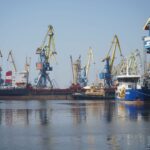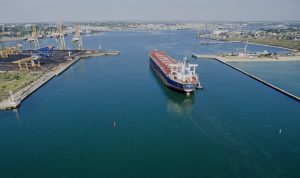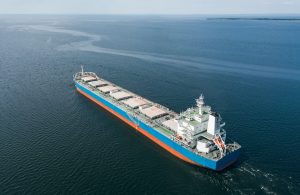Port of occupation: what is behind the “tenders” for billions in captured Mariupol
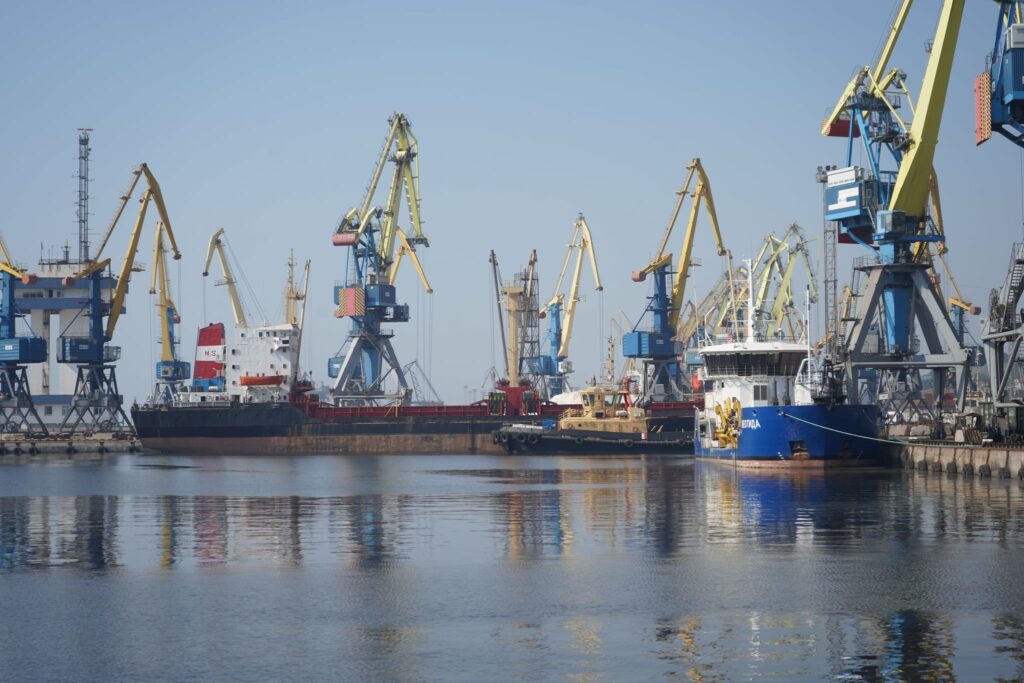
The port of Mariupol is turning into one of the main logistical hubs of the invaders for the export of stolen Ukrainian resources — primarily coal, grain, and metal.
Despite the fact that Ukrainian experts claim that the Russians cannot and will not restore the port of Mariupol, the Kremlin is actively investing in increasing the capacity of the occupied terminals. For Moscow, Mariupol is a logistical find that must be urgently reconstructed: not for humanitarian, but for a completely predatory purpose.
USM received at its disposal the tenders that the invaders held to expand the port of Mariupol, and spoke with the head of the Center for the Study of the Occupation, Pyotr Andryushchenko, to find out which Russian companies are connected to this criminal activity.
***
Since 2024, the Russian Federation has illegally exported more than 120 thousand tons of Ukrainian coking coal. According to the Foreign Intelligence Service, all this is from the occupied Donbas, through the terminals of Mariupol. It should be noted that the Mariupol port is the deepest among those that the Kremlin has occupied since 2022 and, in fact, the deepest port in its region.
Before the start of the full-scale war, the passport depth of the approach channel was 9.15 m, and in the water area – up to 9.75 m. This allowed it to accept vessels with a draft of up to 8 m and a length of up to 240 m, and not only “river-sea” vessels.
Other occupied ports of mainland Ukraine have depths limited for full-fledged sea freight. For example, Berdyansk is capable of accepting vessels with a draft of up to 7.9 m, but has other maneuverability restrictions.
The “Alpha Hermes”, “Victoria V”, “Alfa-1” and other vessels delivered coal to ports in Russia, Turkey, and Algeria. Some of the voyages were disguised — for example, the Sv. Nikolay vessel turned off its transponder and made a “transit stop” at the port of Temryuk, where the Russians reissued cargo documents, supposedly indicating a different port of loading.
The sender was identified as Green Rabbit Limited, a company registered in Hong Kong but associated with Russian citizens.
Currently, up to 60,000 tons of coal are exported from the port every month, and at least five ships are loaded every two weeks. Kaolin is also accumulating at the berths — although it is temporarily not being exported, analysts suggest that this is just a logistical pause.
Meanwhile, the Russian Federation is modernizing the port to bring its capacity to 12 million tons per year. The reconstruction of terminals and the repair of infrastructure are not for people or for the development of the region, but for a new wave of plunder of Ukrainian resources.
“The Russians are creating an international hub,” commented Petro Andryushchenko, head of the Center for the Study of Occupation. “The ports (ed.: in the temporarily occupied territories) are already working mostly for export. And what comes out, especially from the port of Mariupol, goes directly on without being reloaded in other ports. This is shadow export.”
While the Russian media and officials of the “People’s Republic Donetsk” are complaining about the state of the port, in fact its infrastructure is being actively restored — in a semi-public tender mode. Documents obtained by the USM editorial office show that the occupiers are investing hundreds of millions of rubles in port reconstruction, mainly through fictitious and controlled companies.
The main goal is to create a hub for coal and grain transshipment
The tenders studied clearly signal: the Russians are not just “patching holes” — they are building infrastructure for the logistics of mass export of raw materials. Already in 2023, the occupation administration of Mariupol signed dozens of contracts for the reconstruction of port facilities, in particular:
- Repair of berth No. 3 — contract with LLC “Stroygazmontazh-M”, amount — 146 million rubles. (1.832 million dollars);
- Repair of the access railway tracks to the port — JSC “StalPut”, 112 million rubles (1.405 million dollars);
- Modernization of the port elevator — LLC “YugTechMontazh”, over 92 million rubles. (1.154 million dollars);
- Supply of new loading equipment — LLC “KranSpetsPostavka”, another 67 million rubles. (841 thousand dollars).
Most logistics projects feature JSC RZD (Russian Railways), which, through its subsidiaries, participates in tenders for track repairs, terminal reconstruction, and equipment purchases. Formally, for “socio-economic recovery,” but in reality, for the construction of a permanent coal export route from Donbas.
“RZD” has already tested the route “Shakhty — Donetsk — Novoazovsk — Mariupol — Temryuk” and even exported coal shipments by rail with subsequent reloading at the port.
Thus, tender procedure No. 76188717 was conducted in the format of a request for commercial proposals. The Russian state company Rosmorport conducted a closed tender procedure for servicing the dredging vessel Urengoy in the port of Mariupol. This involves work in the area of the Coal Harbor — a part of the occupied city where Russia is trying to restore and modernize the port infrastructure.
Tender for agency of the dredger “Urengoy” for dredging in the approach channel of the Ugulnaya Harbor of the port of Mariupol in the interests of the Russian Federation
The procurement was carried out in the format of a request for commercial proposals – that is, without open bidding and without a wide competition. This type of procedure is usually used when they want to quickly select a contractor or estimate the approximate cost of a future contract. Natalia Bratysheva, who works in the Rosmorport branch in Astrakhan, was appointed responsible for communication with the participants. All documents were submitted via the RTS-Tender electronic platform.
Formally, this is only the stage of collecting proposals, but given the nature of the procurement and the place of implementation – Mariupol in the occupied territory – it can be assumed that “Urengoy” is preparing for the next stage of dredging, which is of strategic importance for the restoration of shipping in the port.
Fictitious players with Crimean registration
Most of the companies that received contracts for the port reconstruction are little-known structures registered in occupied Crimea or in southern Russia. They often have common beneficiaries, and in some cases, the same contact details. For example:
- OOO YugTechMontazh, which installs a port elevator, previously appeared in contracts with the port in Sevastopol, and its founder is associated with a number of companies that service the Crimean port infrastructure;
- JSC StalPut, which repairs the access railway tracks to Mariupol, is part of a holding company associated with the Russian Ministry of Defense. At the same time, this company provided logistics for Russian military bases in Taganrog and occupied Makiivka;
- OOO KranSpetsPostavka specializes in “fast” supplies of equipment without tenders. Its managers previously worked in the field of military logistics.
The occupation administration held tenders with a suspiciously low winning rate. For example, in tender No. 72385443 for the analysis of the conformity of technical documentation, the starting price of the contract was almost 16 million rubles ($200.6 thousand). But the winner was the company that agreed to perform the work for 4.5 million rubles ($56.4 thousand) — only 28% of the initial amount. Other participants offered 11.25 and 15.27 million rubles. All applications were accepted, which only confirms the preliminary agreement between the participants.
Tender for the development of technical documentation for equipping maritime safety facilities in the Mariupol seaport
The procurement was organized by the Russian state enterprise “NIKYMP”, which deals with measuring instruments. The legal address of this company is in the city of Sevastopol.
In fact, tenders are won by “their own for their own” — companies with experience in the occupied territories or in the military segment.
None of the announced tenders was registered in the Russian federal register of state procurements. All procedures are carried out through the “local platforms” of the pseudo-formation “People’s Republic Donetsk”, without transparency, competitions and even clear technical specifications. At the same time, the budgets for reconstruction are constantly growing: for example, the modernization of pier No. 3 has doubled in six months.
“This is money laundering. Well, it’s just so that everyone gets their 100 percent and that’s it. It’s not just with the port, it’s a story everywhere,” said the head of the Center for the Study of Occupation.
Some contracts are issued retroactively. In one case, according to the documents, the equipment was supposed to be delivered two days before the contract was signed.
International silence and legal vacuum
The Russians do not simply control the occupied territories – they systematically integrate them into their military-economic system. And the Mariupol port in this scheme performs a critical function. It is not being modernized for the sake of restoration or humanitarian cargo. It is being rebuilt to export the looted goods. All these are resources that belong to Ukraine, but through this port they can end up on the world market under the guise of Russian products.
Tender for diving work to inspect the underwater part of tugboats: “Captain Merkulov”, “Captain Markin”, “Portovik” in the interests of the Russian Federation
Ukraine’s Western partners recognized the export of grain from the occupied territories as looting back in 2022. But after that – silence. None of the companies participating in the reconstruction of the Mariupol port were sanctioned. Not a single logistics route was blocked.
Instead, we see the creation of a full-fledged export vertical: from the captured field to the modernized elevator and unloading onto a ship. And all participants in this vertical remain unpunished.
On the geopolitical map of Russia, the Mariupol port occupies a much more important place than just a transit hub. It is a symbol and tool of annexation. And the Kremlin needs it not for civilian life in the captured territory, but to consolidate economic control over Donbas and the Azov coast.
In turn, Petro Andryuschenko is convinced that at the expense of Ukrainian resources, the invaders are trying to minimize losses in the Russian economy. In fact, the Russians will export everything they can.
“This is a completely commercial story that allows them to slightly level the negative economic consequences as much as possible. Now the enemy is exporting only raw materials – this is coal, this is ore, this is coal. And this is a crisis story on the territory of Russia. That is, there is almost zero sub-value here. And this allows them to balance somehow,” Andryuschenko emphasized.
Why does Russia need a port in a destroyed city?
After Russian troops destroyed more than 90% of the city’s infrastructure, there are no real prerequisites for restoring Mariupol as a civilian center. But there is a port. And if the city has four times fewer people than before the war, this does not prevent the port from working at full capacity.
According to the Russian Federation, the ports of the Azov coast – Mariupol and Berdyansk – are to become new export gates for the occupied regions of Donbas, Zaporizhia, and Luhansk. The plans include:
• launching a ferry connection with Kuban;
• developing railway branches to Temryuk and Taganrog;
• creating a single logistics hub via the Kerch Bridge, including the ports of Crimea.
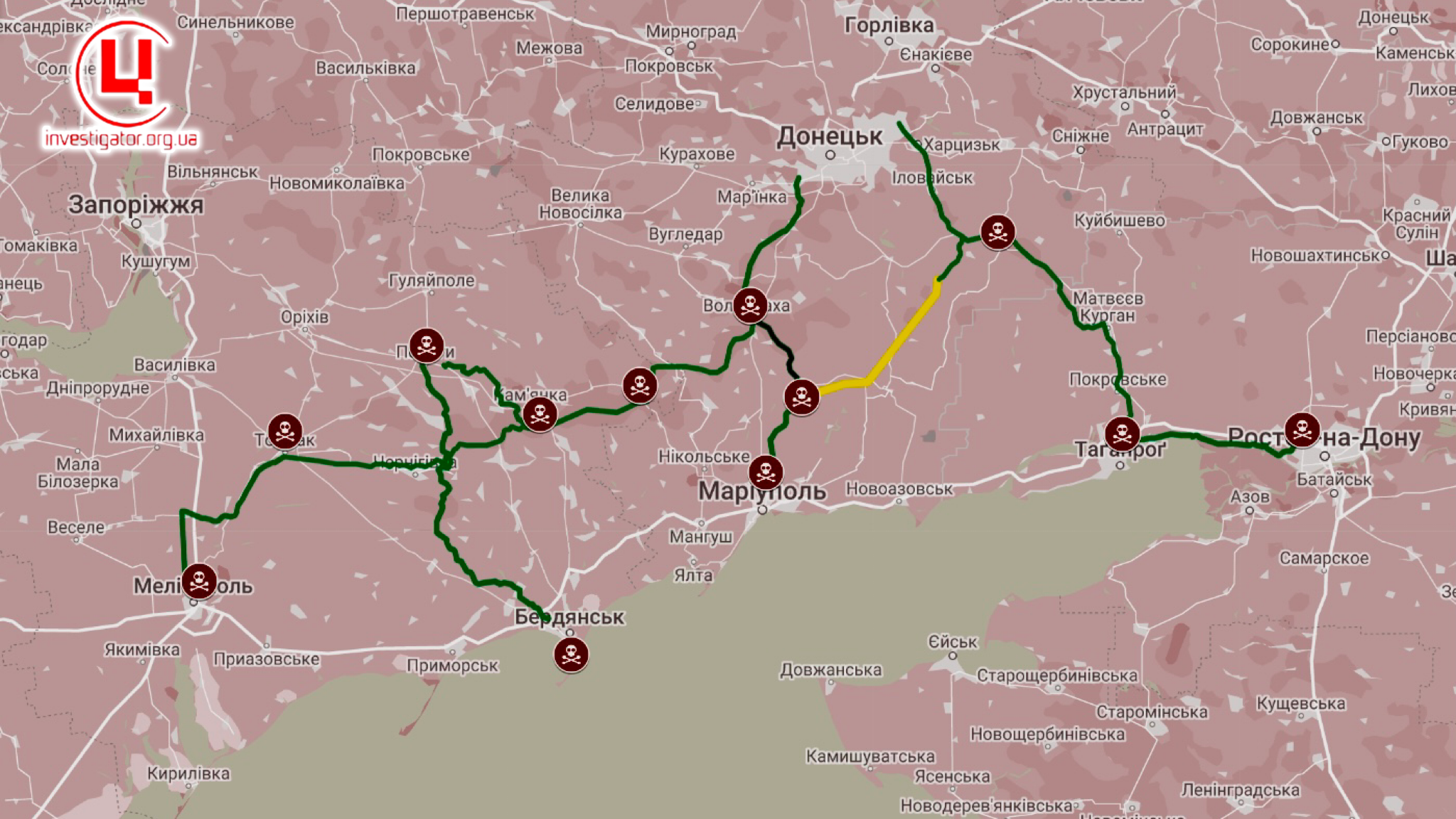
Scheme of the Russian Federation’s railway connection with the occupied East and South of Ukraine
This is a de facto economic annexation that should consolidate the military. Mariupol plays the role of a transshipment point not only for raw materials, but also for propaganda: they say, “integration is successful, life is returning, business is working.”
However, if in 2022–2023 the Kremlin still tried to hide the scale of the export of Ukrainian resources, now it is no longer so. On the contrary: the ideology of the “Azov province” is based on a simple principle – to give what has been seized to Russian capital. Coal, grain, metals, kaolin – all this is considered a military contribution, at the expense of which Russia is waging war.
And while the fight for kilometers continues at the front, in the rear the occupiers are already counting tons. They are exported by wagons, loaded onto ships, and fictitious certificates are issued. And the port, which is formally “not working,” works like clockwork.
Despite this obvious picture, at the international level the situation with Mariupol remains little noticed. Only sporadically are cases of illegal export of grain or metal mentioned. But no one systematically talks about the creation of a military-logistical hub of the invaders on the basis of a Ukrainian port. This is a political, diplomatic and sanctions gap that must be closed.
However, as the head of the Center for the Study of Occupation emphasizes, the situation with international monitoring and sanctions is much more complicated.
“We should have our own question: have we imposed at least some sanctions on the one who is exporting? It is known who is taking it and where. It is clear that there are no Ukrainian sanctions, what (ed.: international) sanctions do we still want,” the expert emphasizes. “We need to monitor which ports and how it is done, how documents are passed, what schemes are used. No one is doing anything about it. And we are not doing anything about it either.”
Andryushchenko is sure that demanding monitoring and the implementation of sanctions from the international community, first of all, we must start acting ourselves. Because “if we didn’t start with ourselves, what can we demand from our partners?”
Today, the Mariupol port is not just another facility in a temporarily occupied territory. It is legal and material evidence of a systemic crime. Proof that Russia is waging not only a hot war, but also a quiet economic occupation: with its plans, its contractors, its trains, its “extraction”.
Finally, it is worth recognizing: while Russia occupies Ukrainian cities, no “economic development” there is development. This is plunder accompanied by propaganda, and the Mariupol port is one of the most striking examples.
Daniil Popov
